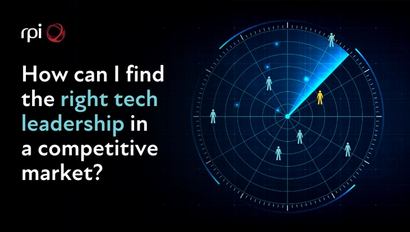Like fingerprints on surfaces, or footprints on the ground, when we interact with digital, we leave a trace behind. Information gathered by our IoT devices, our e-commerce preferences, our social habits, our reactions on social media... every action online creates “digital dust”: a kind of residue that is secondary to the primary data we consciously share.
The more data we create, the more “digital dust” we leave behind, much of it consisting of unstructured or semi-structured data (such as social media posts, rich media and data collected from sensors). Yet as our methods of processing and understanding data evolve, so do our opportunities to harness it, extracting more detailed and nuanced analysis.
However, making use of this data is not simple. We’re not talking about binary ‘black/white’ information: we’re talking about analysing data that relates to human behaviour, and all its messy complexity. Understanding this data requires more than automation. It needs psychology.
This is the mode of thought behind the Internet of Behaviour, and it is already starting to transform the relationship between organisations, customers and their data.
What is Internet of Behaviour?
The Internet of Behaviour is the logical next step from the Internet of Things. While IoT collects data from billions of physical devices around the world, IoB connects it with real world actions – essentially, taking abstract data and turning it into human insight. This mix of technology and behavioural psychology can help organisations to analyse and influence individuals in a more all-encompassing way.
According to Gartner, by 2023, the actions of 40% of the global population will be tracked digitally to influence behaviours, with growing use of IoT wearables, home gadgets and even workplace automations providing an ever-deepening pool of information. By the end of 2025, Gartner anticipate that more than half of the global population will be part of an IoB program, be it commercial or governmental.
What Gartner doesn’t specify is how those people will opt in (or out) of IoB programs, and whether the nature of IoB even makes it possible for people to truly take ownership of their data. Can any of us fully comprehend how much digital dust we generate, or what that information means in real terms?
Offering better customer experience…or breaking customer trust?
For businesses, this poses a critical question. As with any new data-driven activity, it’s important that you take a moment to ask: just because you can, does it mean you should?
IoB does give businesses and organisations a chance to offer a truly personalised, bespoke customer experience, using data to delve deeper into what motivates people, but also into how they might want their experience to look and feel. It opens the door for more sensitive, holistic, and even practical data use cases.
On the other hand, it also has the potential to be intrusive. Even the existence of “digital dust” blurs the line around data privacy and what consent really means: taking the next step and using that digital dust is an even foggier concept.
Often, it comes down to customer experience. In a way, businesses and consumers are in a constant exchange with data: customers are often happy to share information, if they are getting value back in return. If you are handing over masses of data, only to receive the same half-hearted attempts at personalisation or service, then why bother? Why not opt out?
Think about a black box in car. Drive safely, and your insurance premiums go down. Drive recklessly, and you pay more. The same concept is now being used with wearables, with certain ‘healthy’ behaviours tracked on your FitBit or Apple Watch being rewarded with lower insurance costs. The success of this scheme depends on how the consumer – not the company – perceives the value that they get in return for their personal data. Is the data you pay, worth the experience you receive?
How can businesses use IoB?
Getting to grips with IoB is beyond the skillset of any one individual, or department. It needs to be part of a business-wide data strategy, with businesses leaders, tech implementors and customer-facing personnel keeping up a constant dialogue.
To fully leverage IoB commercially, businesses need to be able to successfully combine technology and psychology. Lean too far towards technology, and you lose that deeper insight, with automated tracking removing the human element of IoB. Lean too far the other way, and you lose the benefits of automation and real-time, actionable insights.
Successful IoB also needs to have commercial direction. Without it, businesses will find themselves back in the dark days of the Big Data boom, when masses of data were collected without purpose, creating more confusion than comprehension.
If you are going to explore IoB, take a moment to think about how you will commercialise it, how it will change your customer experience, how well you are able to conform to data protection laws, and whether you have the commercial and technological skills you need to make it a success.
If you’re looking for the skills to drive the next stage of digital innovation in your business, contact Hugh Williams on LinkedIn or via email at hw@rpint.com.



